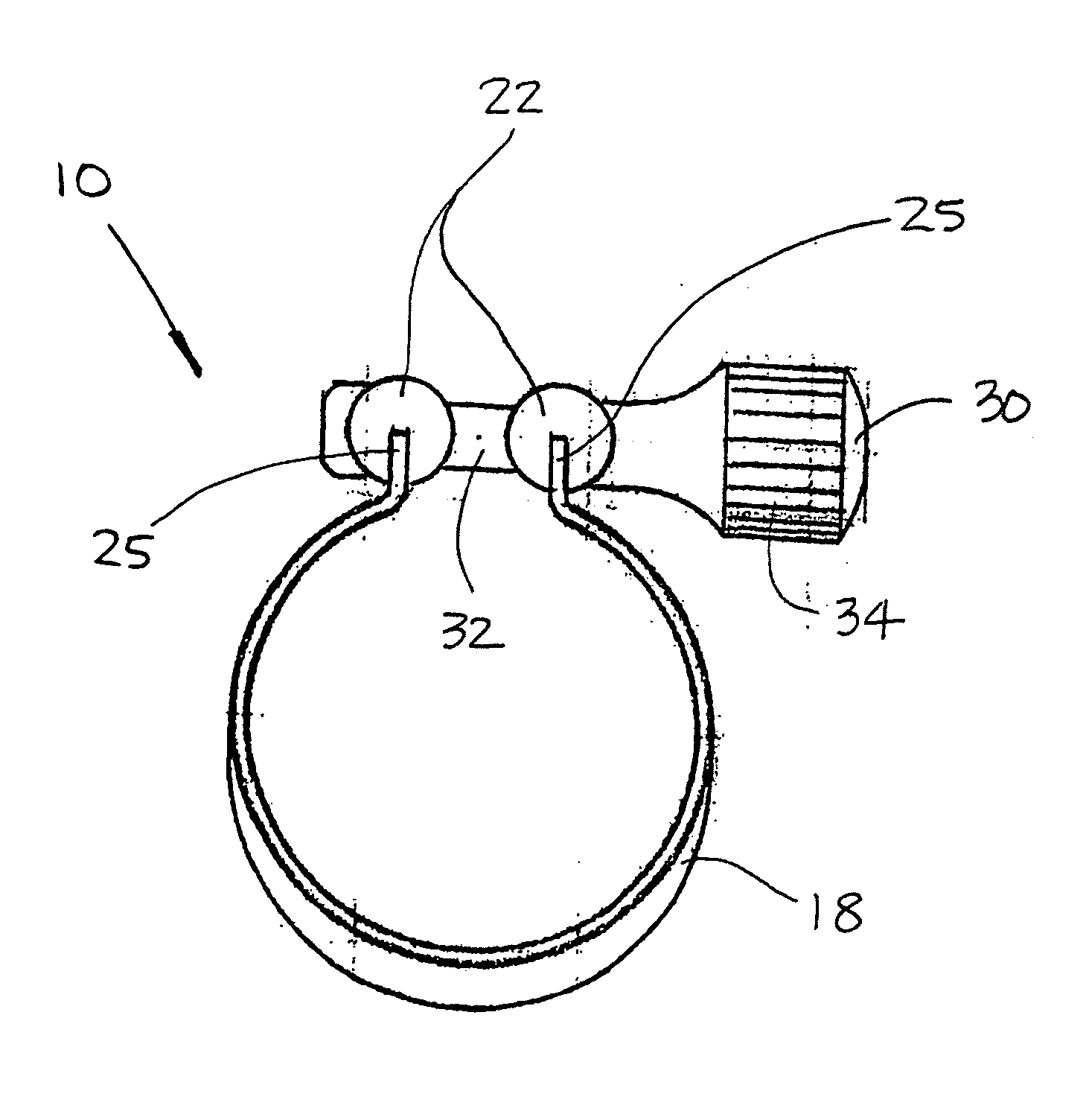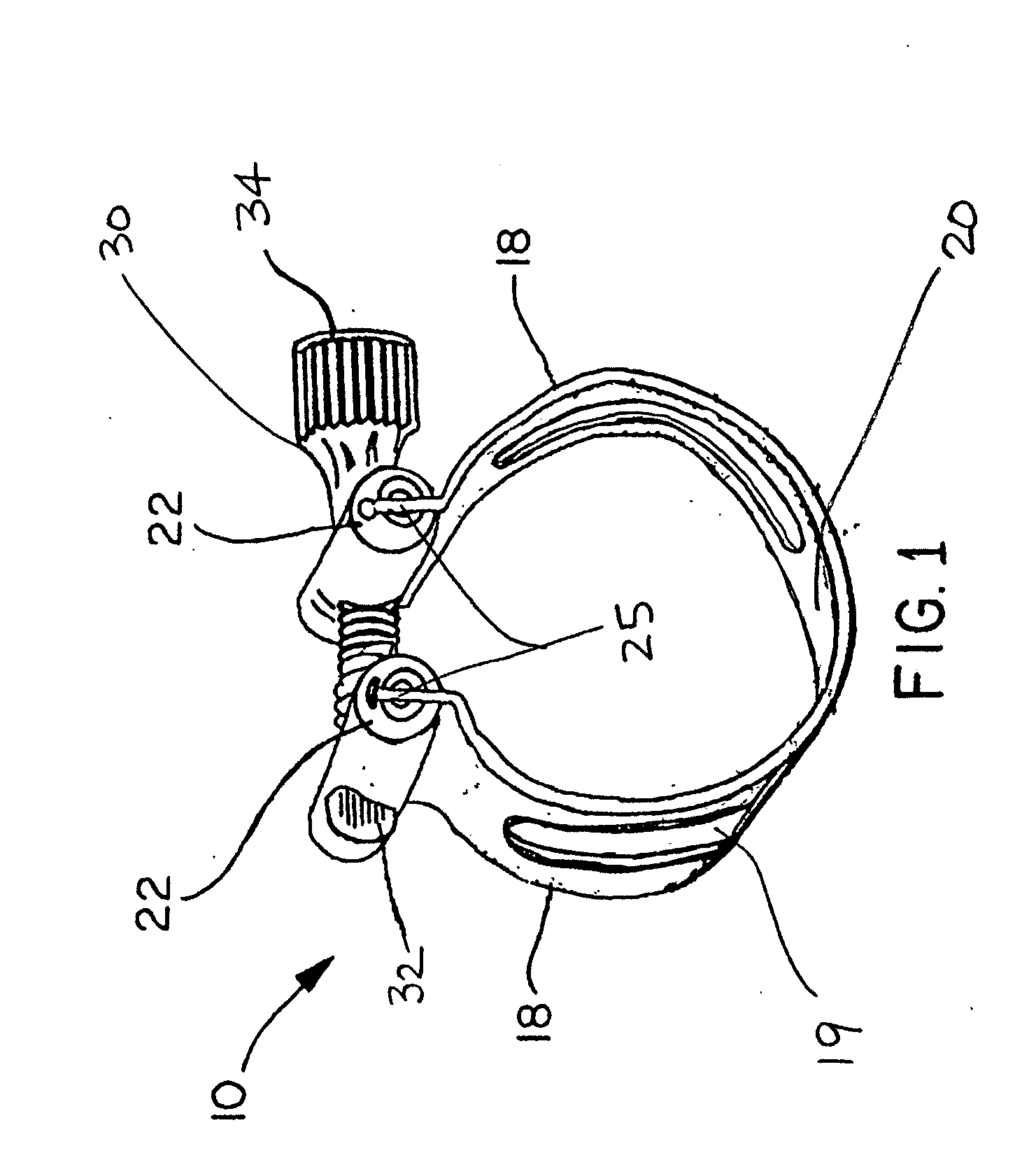Multi-tonal ligature
a multi-tonal, ligature technology, applied in the direction of wind instruments, instruments, musical instruments, etc., can solve the problems of high mechanical impedance for the ligature end, the termination of the body, and the inability to achieve satisfactory performance throughout the full range of adjustment, so as to facilitate the generation of multiples, reduce mechanical impedance, and reduce the frequency bandwidth of the predominant resonance
- Summary
- Abstract
- Description
- Claims
- Application Information
AI Technical Summary
Benefits of technology
Problems solved by technology
Method used
Image
Examples
Embodiment Construction
[0020]FIGS. 1-4 are, respectively, perspective, top, end, and side views of an improved ligature 10 according to the present invention. The ligature 10 of the present invention is intended for use on the mouthpiece of any woodwind type musical instrument having a reed, such as a clarinet or a saxophone. FIGS. 5-7 show the mouthpiece 100 of a musical instrument with the ligature 10 attached thereto in a series of tonal adjusting positions.
[0021] The ligature 10 has a flexible body 18 formed, as shown in FIG. 8, from a trapezoidal-shaped section of flexible rubberized, or plasticized, fabric with one side being smooth and the other defined by a textured pattern 33. FIG. 2's top view of the ligature 10 illustrates the textured surface 33 of the body 18. The textured surface 33 is defined by a shallow crisscross or similar pattern which assists in making the contact area between an instrument and the body 18 more compliant. Compliance serves to cushion the ligature's contact with the r...
PUM
 Login to View More
Login to View More Abstract
Description
Claims
Application Information
 Login to View More
Login to View More - R&D
- Intellectual Property
- Life Sciences
- Materials
- Tech Scout
- Unparalleled Data Quality
- Higher Quality Content
- 60% Fewer Hallucinations
Browse by: Latest US Patents, China's latest patents, Technical Efficacy Thesaurus, Application Domain, Technology Topic, Popular Technical Reports.
© 2025 PatSnap. All rights reserved.Legal|Privacy policy|Modern Slavery Act Transparency Statement|Sitemap|About US| Contact US: help@patsnap.com



